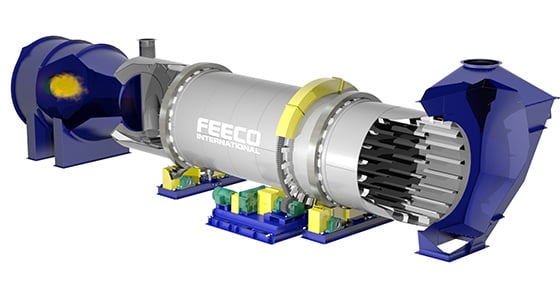What is Metallurgical Coke?
Aka: coke, met coke
Metallurgical coke is created through the destructive distillation of coal or coal blends. This thermal treatment drives off volatile components and leaves behind a solid carbon material (note that this is different from petroleum coke, which is a byproduct of oil refineries).
Coke is useful in a number of applications, but it is most recognized for its role in iron and steelmaking. Most notably, metallurgical coke is utilized in blast furnaces that produce pig iron in order to reduce iron ore to iron (the EPA estimated in 2008 that more than 90% of coke production goes toward blast furnace operations, with most of the remainder going toward foundry coke).
The Role of Coke in Iron and Steel Production
While coke serves multiple purposes in a blast furnace, its most critical role is as a permeable support surface; coke acts as a support for iron-bearing burden, while allowing slag and metal to drain through to the hearth and gases to move upwards.²
Changing production conditions to meet increasingly higher and more varied outputs of iron has put greater physical, chemical, and thermal demands on coke, necessitating a higher quality coke product.²
According to Steel.org, “Coke is the most important raw material fed into the blast furnace in terms of its effect on blast furnace operation and hot metal quality. A high quality coke should be able to support a smooth descent of the blast furnace burden with as little degradation as possible while providing the lowest amount of impurities, highest thermal energy, highest metal reduction, and optimum permeability for the flow of gaseous and molten products. Introduction of high quality coke to a blast furnace will result in lower coke rate, higher productivity and lower hot metal cost.”
Why Coke Drying is Important
Various impurities will impact the quality of the coke and subsequently how it will perform in the blast furnace. This includes moisture, volatile matter, ash, sulphur, phosphorous, and alkali contents.²
Among other qualities, a low moisture content plays a key role in the quality of coke, and subsequently, how it performs in the blast furnace and the resulting hot metal quality, with 2.5% moisture by weight considered an acceptable average.¹
Coke contains moisture as a result of the quenching process, which cools coke after processing. While a blast furnace can remove moisture from the coke, it was not designed with this intention and would therefore be highly inefficient. Furthermore, coke with a higher moisture content will have a reduced strength, decreasing its quality as a blast furnace coke.³ Drying has become such an integral step in producing a quality coke that companies will often have a dedicated drying plant on-site.
Rotary Dryers for Coke
Like many industries, rotary dryers are the industrial drying system of choice when it comes to drying coke.
Rotary dryers are known for their robust build, high throughput, and ability to accept variance in feedstock – all characteristics that lend well to handling coke.
Rotary dryers for coke are typically designed with a few key characteristics of coke in mind:
Abrasiveness:
Coke is an abrasive material, requiring special materials of construction to aid in abrasion resistance. This might include abrasion resistant (AR) liners for the feed chute and the interior of the drum shell. In many case the internal lifting flights are fabricated from AR steel and are bolted in for ease of replacement in case of wear. As is the case with most abrasive drying applications, most wear occurs in the first quarter of drum length.
Volatility:
Coke is slightly volatile and must be kept from combusting. In addition to choosing appropriate temperatures and retention times, rotary dryers for coke are designed with a co-current airflow, meaning that the material and process gas flow in the same direction.
A co-current airflow puts the wettest material in contact with the hottest gases to minimize the opportunity for combustion. If the dryer were to be designed with a counter current configuration, the hottest gases would be in contact with the driest material, creating an increased opportunity for combustion.
Conclusion
Drying plays an important role in coke quality for blast furnaces. As a leader in custom thermal processing equipment and systems, FEECO can provide custom rotary dryers for coke drying, as well as any necessary handling equipment to support the process. For more information, contact us today!
- http://www.steel.org/making-steel/how-its-made/processes/processes-info/coke-production-for-blast-furnace-ironmaking.aspx
- https://social.stoa.usp.br/articles/0016/5403/coal_for_metallurgical_coke_production.pdf
- https://books.google.com/books?id=1qfmAAAAMAAJ&pg=PA156&lpg=PA156&dq=coke+dryer+for+blast+furnace&source=bl&ots=sLBExHRn38&sig=x3fxgDuHb2J_11ifUtuC-ihjciE&hl=en&sa=X&ved=0ahUKEwi8zvnY7PfUAhVk7IMKHWbXBx4Q6AEIRzAJ#v=onepage&q=coke%20dryer%20for%20blast%20furnace&f=false



